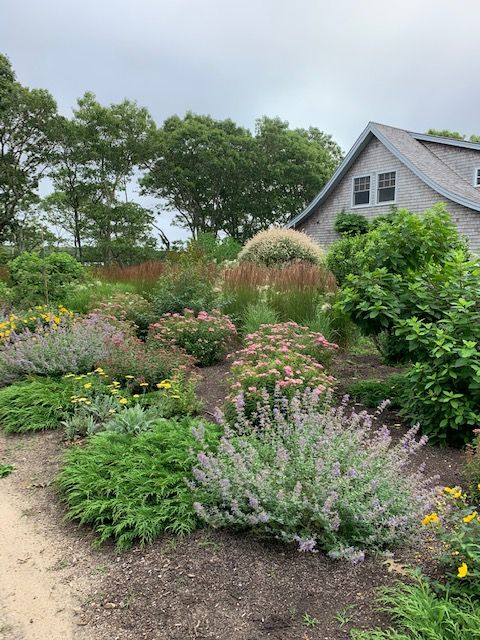Introducing 7 Ways to Reduce Your Carbon Footprint With Your Front Yard
Are you looking for ways to reduce your carbon footprint and create a more sustainable lifestyle? Your front yard is a great place to start! Making a few simple changes to your outdoor space can have a positive impact on the environment. In this blog, we’ll provide you with seven tips to help you reduce your carbon footprint with your front yard. From planting native species to using natural materials, these eco-friendly tips will help you create a green and sustainable front yard.
1. Plant Native Vegetation to Provide Natural Carbon Sequestration
As the global population continues to grow, the need to focus on more sustainable practices has never been so important. One of the most effective strategies in combating climate change is to plant native vegetation, which helps to naturally sequester carbon dioxide from the atmosphere. Not only does this help to reduce the amount of greenhouse gas emissions, but also improves air quality and encourages biodiversity.
Native vegetation is well adapted to the local environment, meaning that it requires less water and is generally more resilient than non-native plants. This is an important consideration as water resources become increasingly scarce in many areas. Additionally, native species also provide food and habitat for local wildlife, making them a great option when it comes to sustainable land management.
When planning a landscaping project, it is important to research the local flora and determine which species are best suited to the area. This should include researching the type of soil and the amount of sunlight the plants will receive, as well as the amount of rainfall and temperature range. Doing so will ensure that the plants are able to thrive and provide their maximum benefit.
2. Install Water Conservation Measures
Water conservation is an important consideration for any sustainable landscape project. With water resources becoming increasingly scarce in many areas, it is important to find ways to reduce water usage. One of the most effective ways to do this is to install water-saving devices such as low-flow toilets, faucets and shower heads. These devices can help to reduce the amount of water used in the home, while also helping to save money on utility bills.
Additionally, installing rainwater harvesting systems can provide a great way to conserve water. These systems are designed to capture and store rainwater, which can then be used for irrigation or other purposes. This is a great way to reduce the amount of water drawn from the municipal supply, while also helping to reduce the strain on local aquifers.
Finally, it is also important to consider the type of plants that are used in the landscape. Native plants are typically more drought-tolerant and require less water than non-native species. This can be a great way to reduce water usage in the garden, while also promoting local biodiversity.
3. Plant Native Vegetation to Provide Natural Carbon Sequestration
Planting native vegetation is an effective way to reduce the amount of carbon dioxide in the atmosphere and help combat climate change. Native vegetation helps to capture and store carbon dioxide, which is then converted into biomass. This process, known as carbon sequestration, helps to reduce the amount of carbon dioxide in the atmosphere and helps to mitigate the effects of global warming. Additionally, native vegetation provides numerous other benefits, such as providing food and habitat for wildlife, improving water quality, and providing a natural barrier against erosion.
4. Utilize Solar and Wind Power Sources
Utilizing solar and wind power sources is a great way to reduce your carbon footprint and help combat climate change. Solar and wind power are renewable energy sources that produce no emissions and have no impact on the environment. Additionally, solar and wind power are becoming increasingly affordable and are becoming more widespread. Installing solar panels or wind turbines on your property is an easy and effective way to reduce your energy consumption and help combat climate change.
5. Reduce Lawn Space and Opt for Ground Cover
Reducing the size of your lawn and opting for ground cover is an excellent way to reduce your carbon footprint and fight climate change. Lawns require a lot of maintenance and can require large amounts of water, fertilizer, and pesticides. Additionally, lawns are typically made up of non-native species, which can lead to the displacement of native species and can have a negative impact on the environment. By reducing the size of your lawn and opting for ground cover such as native grasses, shrubs, and other plants, you can reduce your carbon footprint and help fight climate change.
6. Compost Food Waste and Utilize as Fertilizer
Composting food waste is an excellent way to reduce your carbon footprint and help fight climate change. Food waste is a major source of methane, a powerful greenhouse gas, which is released into the atmosphere when it is disposed of in a landfill. By composting food waste, you can reduce the amount of methane in the atmosphere and help combat climate change. Additionally, compost can be used as a natural fertilizer, which can help to reduce the need for chemical fertilizers and can help to improve soil health.
Composting is a powerful tool to reduce the amount of trash sent to landfills, reduce the amount of methane released into the atmosphere, and create nutrient-rich fertilizer for gardens and landscaping. Food waste is the most common type of compostable material, but other organic materials can be composted as well, such as yard waste, paper, and wood chips. Composting helps to reduce greenhouse gas emissions, and also helps to maintain healthy soil. To start composting, you will need a compost bin, which can be purchased at most garden stores. Once you have your compost bin, you will need to fill it with a mix of green material (kitchen scraps and lawn clippings), brown material (leaves and shredded paper) and soil. The compost will need to be turned regularly to ensure that it decomposes correctly. It will take a few months for the compost to be ready to use in the garden.
7. Implement Rainwater Harvesting Techniques
Rainwater harvesting is a method of collecting and storing rainwater for later use. This practice can be used for a variety of purposes, such as watering plants, irrigating crops, and replenishing groundwater sources. Rainwater harvesting has many environmental benefits, as it can reduce the amount of water used from municipal water supplies and help to reduce the risk of flooding. In addition, harvesting rainwater can also reduce water bills and help to conserve water resources. To start harvesting rainwater, you will need a rain barrel or storage tank, and a collection system such as gutters and downspouts. You will also need to install a filter and an overflow system to ensure that the water is clean and safe to use. Once your system is installed, you can start collecting and storing rainwater for later use.
Conclusion
The climate crisis is an urgent issue that requires immediate attention. We must take action now to reduce the amount of carbon dioxide in the atmosphere and mitigate the effects of global warming. Fortunately, there are numerous steps that individuals, businesses, and governments can take to reduce their carbon footprints and help fight climate change.
The most effective way to reduce carbon dioxide levels is to plant native vegetation, as this will provide natural carbon sequestration. Additionally, installing water conservation measures, utilizing solar and wind power sources, reducing lawn space and opting for ground cover, composting food waste and using it as fertilizer, and implementing rainwater harvesting techniques are all effective ways to reduce the amount of carbon dioxide emissions.
By taking these measures, we can reduce the amount of carbon dioxide in the atmosphere and help fight climate change. We all have a responsibility to do our part in protecting the environment and ensuring that future generations can enjoy a healthy and prosperous planet.





